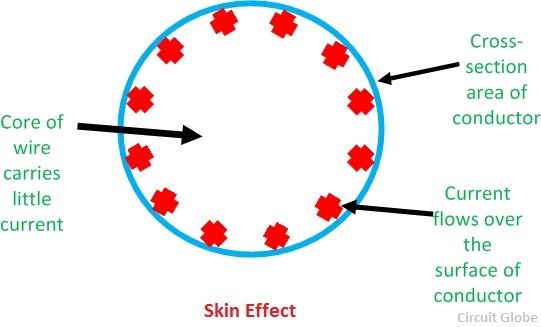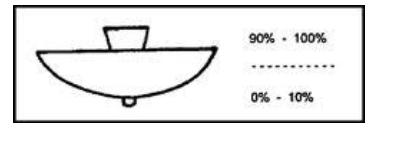What is corona?
There are two types of transmission lines, overhead lines, and underground lines. We all know that; the overhead lines operate at high voltage to reduce the transmission loss. therefore, a very high amount of electric field produced between the conductors.
In overhead transmission lines, the conductors place in free air. Hence, the air acts as the dielectric medium between the conductors.
The dielectric strength of air at normal temperature and pressure is 30 kV/cm.
If the voltage between conductors is high, it causes the potential gradient between the conductors to exceed this value. In this condition, the breakdown of air will take place. And the air is ionized and current will flows through it.
The potential gradient value between conductors reaches 30 kV/cm, the air in the vicinity of the conductor becomes conducting and a hissing sound heard and some vibration produced in the conductor.
Around the conductor, a dark violet glow occurs with a hissing noise. During this process, ozone gas produced.
This entire process is known as the corona.
Corona loss in transmission line
Corona appears in the transmission line when the surface voltage gradient at the line conductor reaches the breakdown stress. Due to corona, heat and bluish light produce. There is a loss of power and energy dissipation. This loss is known as the corona loss.
The efficiency of the transmission line decreased due to corona loss.
There is also a minor effect on the voltage regulation of the transmission line. But this is always negligible.
In normal and fair atmospheric conditions, the corona loss can vary between few kW/km lengths of the conductor in Extra high voltage transmission line.
Particularly in a thunderstorm, the corona loss is very high. It can be hundreds of kW/km in bad weather conditions.
Factors affecting corona loss
1) Atmospheric condition
The corona loss occurs due to the ionization of air between the conductors. In stormy weather conditions, the rainy condition number of ions in the air between the conductors will be more. Hence, chances of corona occurrence will increase.
2) The physical condition of the conductor
- Line voltage: If the line voltage is more, the electric field between the conductor is more. Hence the chance of corona occurrence is more. In a low voltage transmission line, there is less chance of corona.
- Ratio D/r: ‘D’ is the distance between the conductors and ‘r’ is the radius of the conductor. If the distance between the conductor is more compared to the radius, the possibility of the corona is reduced. The strength of the electrostatic field reduced because of the large spacing between the conductors.
- Nature of conductor surface: The rough and irregular surface of the conductor gives rise to more corona. Stranded conductors give rise to more corona compare to the circular conductor.
- The roughness of conductor: Surface causes field distortion and high voltage gradient developed in the local area of the conductor. Thus, the chance of the occurrence of the corona is more.
3) Effect of the frequency
Corona is directly proportional to the supply frequency.
4) Effect of density of air
Corona is intentionally proportional to the density of air. Density is lower in the hilly area. Hence, in this area more chance of the corona.
5) Effect of air conductivity
Higher conductivity leads to higher corona.
Methods to reduce the corona effect
- The corona effect can be reduced by increasing the radius of the conductor or by increasing the distance between the conductors. The spacing between the conductor cannot increase beyond a certain level. Therefore, increase the radius of the conductor to reduce the corona effect.
- The open parts like a clamp, support, etc. are designed with a smooth surface.
- Operating the line at lower voltage reduces the corona loss.










 (iii) Semi-direct System
(iii) Semi-direct System
 (iv) Semi-indirect Lighting
(iv) Semi-indirect Lighting
 (v) General Diffusing System
(v) General Diffusing System
